
EARTH, ATMOSPHERE AND ENVIRONMENT
study.monash








study.monash






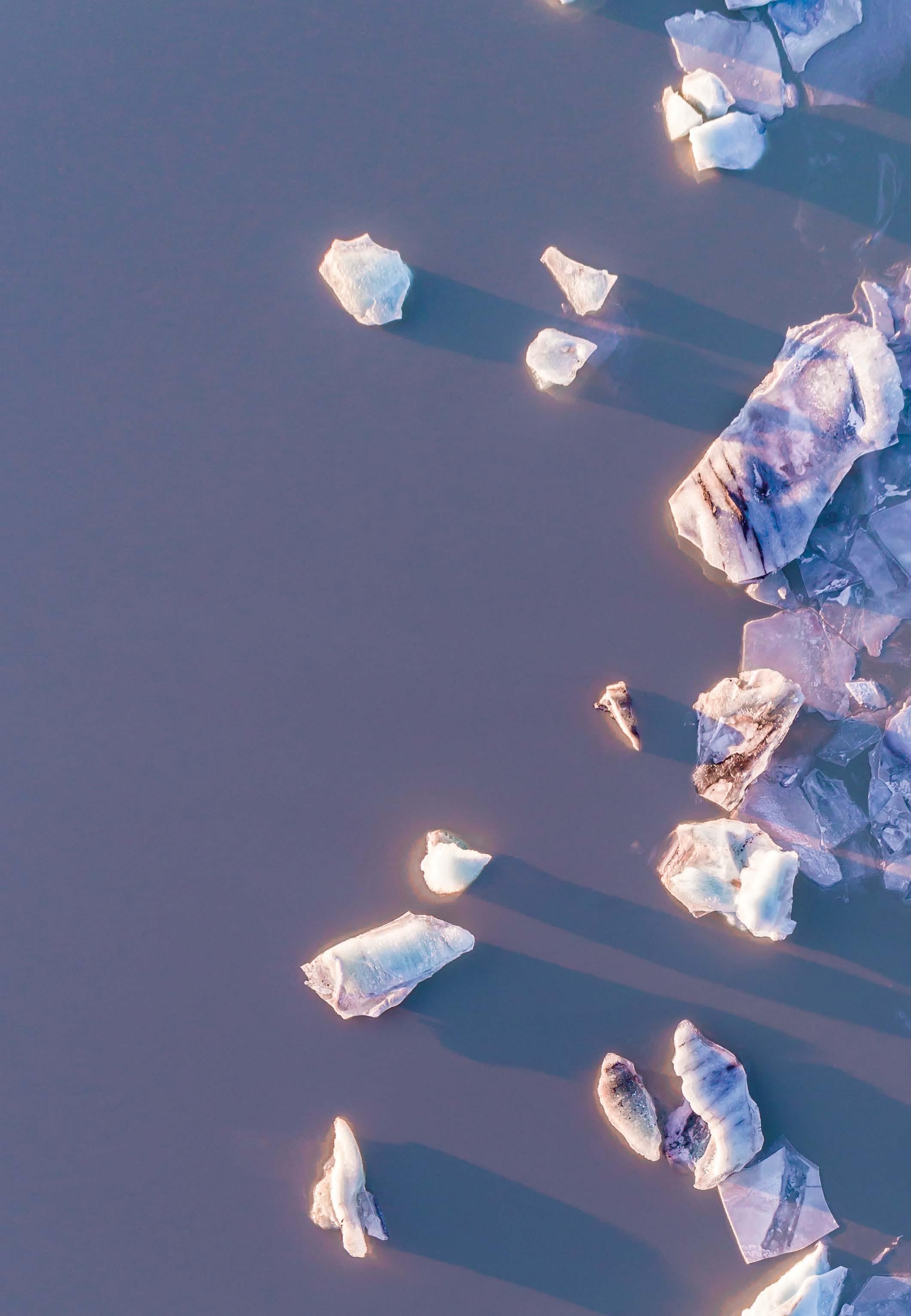
Our living planet is now more at risk than at any time in our history due to human activity; climate change, overpopulation and the destruction of ecosystems.
The School of Earth, Atmosphere and Environment ( EAE ) is educating the next generation of scientists to provide the solutions urgently required to address the United Nations Sustainable Development Goals: understanding climate impacts, providing the mineral resources for a green energy revolution, and protecting our ecosystems through the sustainable management of soils, water and coastal environments.
Our discovery science reveals the processes that have shaped the Earth since its formation and which pose an ever-present risk to life through natural hazards such as earthquakes, volcanic eruptions, and the progressive impact of sea level rise. Australia’s capability in space science is growing, and our researchers investigate the surface of Mars and other planets of our solar system.
We have a thriving international community of academics and students with an outstanding reputation of excellence in research and education, and for influencing governments to respond to global challenges. We have one of the highest concentrations of Intergovernmental Panel for Climate Change ( IPCC ) Lead Authors in the world, we co-host one of the world’s premier Antarctic research programmes, Securing Antarctica’s Environmental Future ( SAEF ), and we are a major node of the Australian Research Council Centre of Excellence in Climate Extremes.
Our educators are passionate and bring their research discoveries into the classroom, and we are focussed on teaching skills that will lead to rewarding and transformative careers addressing the most pressing issues in research, industry, business, government and non-governmental organisations.
We invite you to be a part of our team. In this brochure you will find out about what we do, how you can study the Earth, Atmosphere and Environment of our planet, and how you can use that information to make your impact in the world.

PROFESSOR
ANDREW MACKINTOSH Head of School
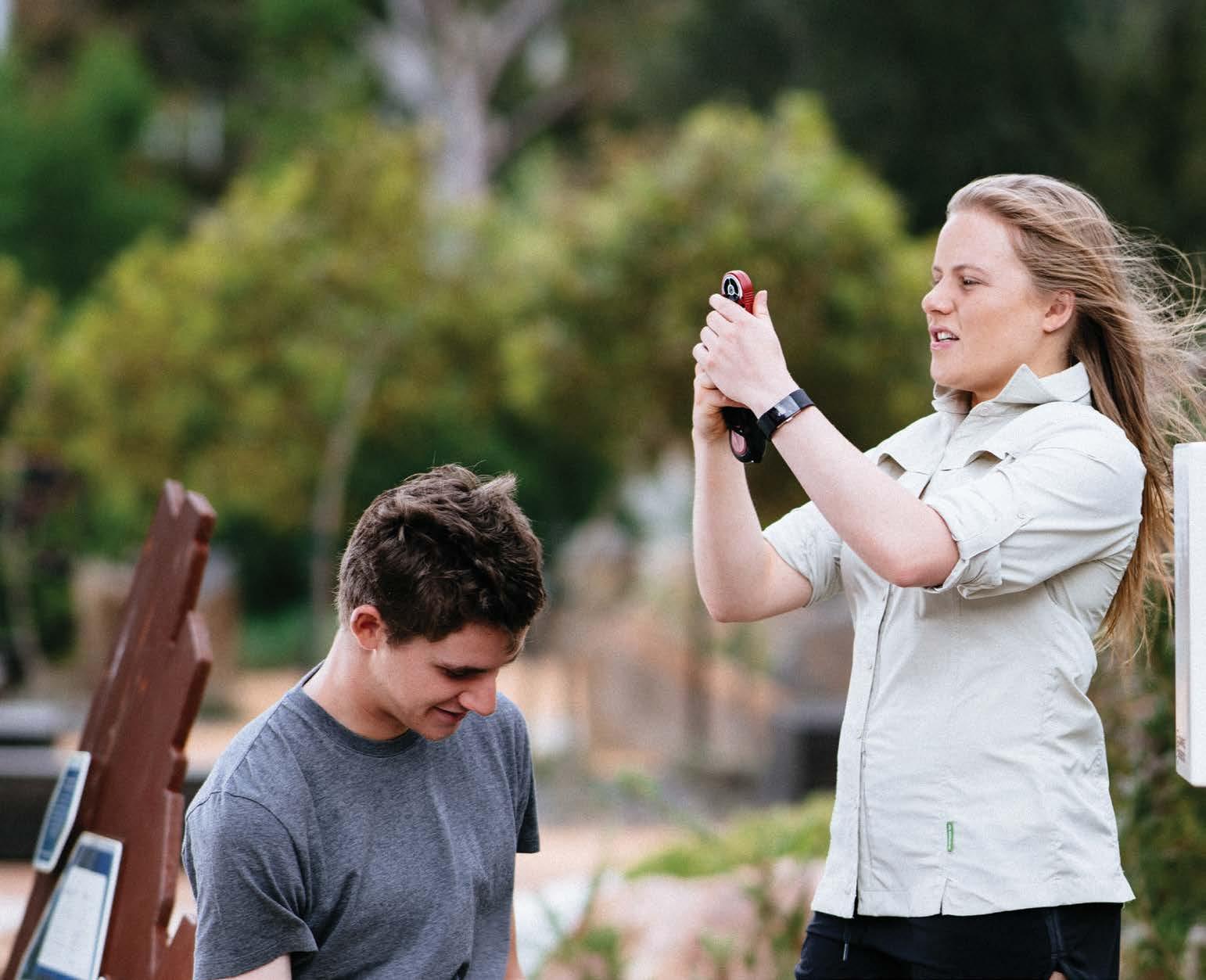
Being a researcher in the School of Earth, Atmosphere and Environment means being a teacher, a techspert, and an explorer. Sustainability is at our heart and we study the atmosphere, oceans and ice sheets to predict climate change impacts and sea level rise, and soils, water, coasts and deserts to plan for a sustainable future. Our work takes us to ancient rocks in remote deserts, mountain ranges, the deepest ocean basins and the surface of other planets. Our school has world-class research facilities to study the micro-cosmos of rocks and water, to simulate Earth’s climate system, deep interior, and to image and simulate the Earth’s surface in unprecedented detail.

The school is one of the leading institutions in a wide range of research activities around the globe. Our research is based on and combines all aspects of classical science disciplines – mathematics, physics, biology and chemistry to better understand our complex planet. Earth scientists in our school are leading experts in weather and climate research, environmental science and physical geography, and fundamental geology and future resources.
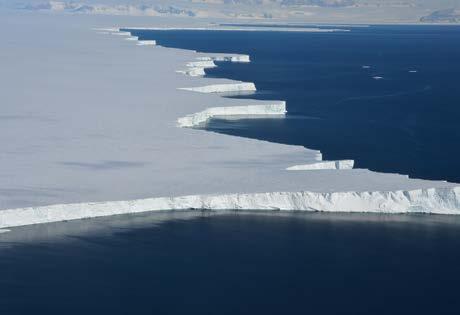
The goal of our research is to address challenges of our modern world and our imminent future: understanding the driving forces and impacts of climate change, securing an environmentally sustainable future, and discovering how our planet operates. Our focus is solving real-world problems with an applied and innovative approach.

Students are an integrated part of our research, be it in the laboratory, in the field or during stimulating research discussion. With your passion for science, nature and STEM, you will discover new career options, will gain hands-on experience in real science application and be rewarded with being part of a worldclass research program.
Studying in the School of Earth, Atmosphere and Environment will open the door to many exciting careers. The jobs on this page are just a snapshot of the varied careers our graduates enjoy.
We have our eye on your future and we work collaboratively with industry so our students develop an early link with real-world problems. Earth and Environmental Scientists earn some of the highest graduate salaries, even higher than Medicine, Law and Economics.
Source: www.graduatecareers.com.au

ENVIRONMENTAL CONSULTANT
WEATHER FORECASTER
CLIMATE CHANGE RISK MANAGER
POLICY ANALYST OR ADVISOR
SURVEY GEOLOGIST
ENVIRONMENTAL IMPACT ASSESSOR
SCIENCE COMMUNICATOR OR EDUCATOR
GEOSPATIAL (GIS) DATA ANALYST
EXPLORATION GEOLOGIST
WATER & LAND MANAGER
GEOSCIENCE CONSULTANT
PUBLIC SERVANT
RESEARCHER
GEOTECHNICAL ENGINEER
Did you attend the School Strike 4 Climate and would now like to really make a difference? Are you fascinated by our coastlines, deserts, mountains and ecosystems and would like to understand and protect them? Have you always dreamed of being a volcanologist? Are the Mars rovers not just interesting but exciting to you? Do you enjoy maths, physics, chemistry or biology, and are looking for a real-world application? If you answered yes to any of these questions then our school is for you!
Earth Atmosphere and Environment 1
EAE1011
Earth Atmosphere and Environment 2
EAE1022
Extreme Earth
ATS1310
Climate Change: Risks and Responses
CLI1100
Elective complementary to any Monash degree
Climate Change: Impacts and Adaptations
CLI1200
Elective complementary to any Monash degree
Understanding how our planet works has never been more important. Society, governments and industry need more people than ever who can address these challenges. There is an increasing need for experts in other areas to have a basic understanding of the earth system, so our future engineers, policymakers, health professionals, teachers and communicators are coming to us to add this knowledge to their skillset.
Your first year studies in the School of Earth, Atmosphere and Environment provide you with an overview of the major forces that shape our planet. You will gain the skills and knowledge which will allow you to pursue a career in an earth science field, or to support your studies in other areas of study.
We do not have any prerequisites for our first year units, and students from all backgrounds are welcome to study with us. For those new to the area, we do not assume any related VCE studies. For those with some related background, you will find that the scope and application of our first year units develops and extends your understanding.
Introduce yourself to the science involved in studying the Earth, including explanations of how and why our planet has changed over its 4.56 billion year history. You will study the formation and anatomy of the Earth and the processes that drive change within our planet and its environmental systems; from its core to its crust, to the systems driving and sustaining the planet’s living surface, to the forces and processes involved in the development of mountains, ice sheets and oceans, and our changing atmosphere and climate.
Expand your knowledge of the environmental, geological and atmospheric processes that create the unique physical environment in which we live, and learn how these processes influence our lives and affect the society in which we live. You will examine how and why the Earth’s surface, atmosphere, ice sheets and oceans have changed in the past, and are predicted to change in the future, as a result of human influences such as deforestation, agricultural practices and human-induced climate change.
Focus on the catastrophes of our world today, such as droughts, earthquakes, epidemics, fires, floods, hurricanes, landslides, tsunamis and weather extremes. You will seek to understand the mechanics and dynamics of these environmental phenomena and how they interact with the social contexts in which these disasters occur. You will also investigate the role of international aid and risk management using local and international case studies.
Follow the story of our changing climate from a global perspective. Starting from the basic principles and processes that define and govern the Earth’s climate, this unit explores how the different parts of the Earth interact to produce the rich past and current variability of climate in space and time, and how human influences are shaping the future of the Earth’s climate. This unit investigates what options humankind has to respond to the community, ethical and political challenges of climate change, including global and national governance models required to mitigate and adapt to its effects. This unit will provide you with the foundation and knowledge to respond to climate change challenges throughout your career, independent of your specific discipline.
How will Earth and Society look through the lens of a changed climate? Every field will be affected by the impacts of climate change – science, social science, business, design, law, health, education, engineering, IT, and everything else you might think of. But every field will also be part of our response. In CLI1200, you will learn how each of these fields will work together to contribute to a more resilient and prepared planet. This unit will provide you with the foundation and knowledge to respond to climate change challenges throughout your career, independent of your specific discipline.
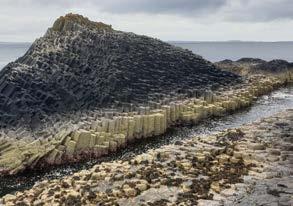




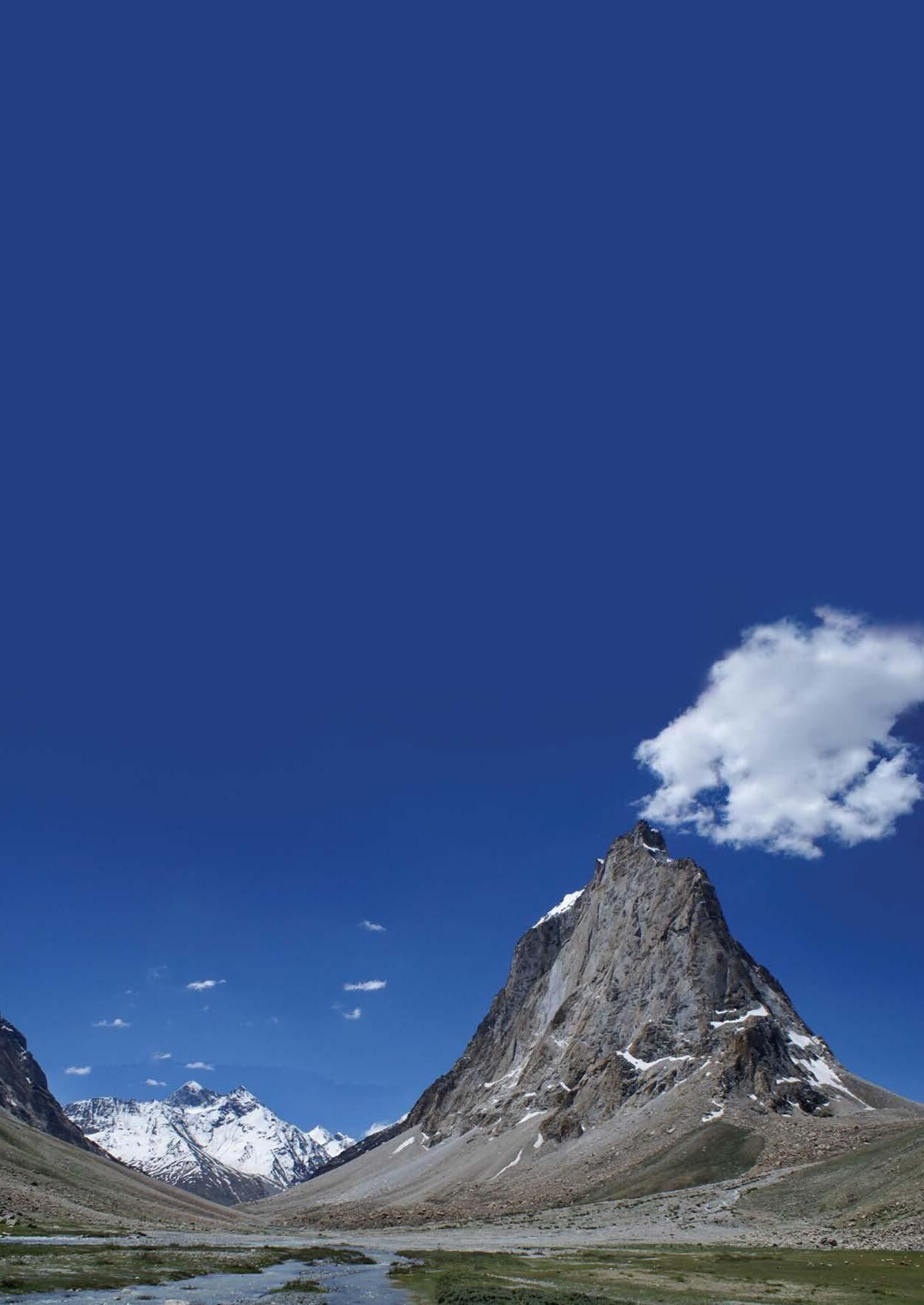
Geologists understand that the Earth, its continents and oceans are always changing and that nothing ever stays the same. How the Earth changes with time is recorded in the rocks that we see at the surface.
Understanding geology is vital to better predict geological hazards, find the many resources that humanity needs, and to manage and protect the Earth.
By studying geosciences, you will learn how to read Earth’s history from rocks, how geological processes such as plate tectonics are continuously shaping our planet by creating new mountains and new oceans. Volcanoes, earthquakes, landslides and tsunamis are all expressions of these processes and they also form the critical mineral resources needed for our renewable energy future.
Geology also provides an understanding of past climates that can be used to predict the impacts of anthropogenic climate change. You will have lecturers that have carried out expeditions to some of the most remote parts of the continents and oceans, and they will take you on field trips to some of the best geological locations in Victoria and beyond.
At the end of your education you will be in a position to better understand what shapes the Earth and what is under our feet.
This is the basis for careers ranging from engineering to environmental work, including mineral exploration and hazard mitigation.
You can study these topics in the Geoscience stream of the Earth Science Major.
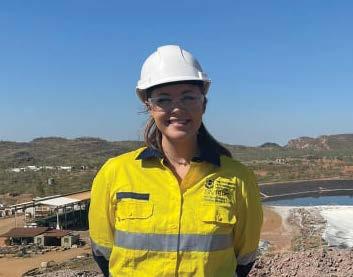
Kristen is an Environmental Consultant at Aurecon Group working in the contaminated land division. Kristen completed her Earth Science major focussing on the Geoscience stream in 2019, with a particular passion for Hydrogeology and analysis and protection of contaminated waterways.
As a contaminated land consultant, Kristen uses many of her skills from her degree. She visits contaminated sites ( like this one) and collects samples to analyse at the lab. She then writes reports recommending how these sites can be protected or improved. The biggest perk of her position is the places she gets to go: all around Australia.
The highlight of Kristen’s degree was the handson analysis: getting out in the field and taking samples was fun, but she got most excited about understanding the contamination and toxicity of those samples.

Pete is passionate about interpreting and modelling the rock signals of the Earth’s magnetic and gravity field to understand how continents and tectonic plates interact, and change over millions and billions of years. His research is focused on the Red Sea, India, New Zealand, and Australia.

Scan the code to hear more from Pete.

Do you want to save the world? Developing sustainable solutions to maintain Earth’s natural environment, combat environmental degradation, alleviate the impacts of climate change, and to ensure food and water security requires wide-ranging expertise in the physical environmental sciences, examined through the lens of human influence.
Our physical geography program fosters global change-makers for environmental problems by examining these problems through a geographic lens. Through our program, you will develop the knowledge and skills required to contribute to creating and maintaining a sustainable environmental future.
Physical geography at Monash allows you to explore the geographical and environmental processes that control our natural environment, and how these are shaped by complex human interactions. You will examine how our land, oceans, biosphere and atmosphere work together to create Earth’s diverse and unique landscapes and ecosystems; from frozen Antarctic deserts to equatorial tropical rainforests. You will discover how these processes shape the world in which we live and how we, in turn, have shaped and changed our natural world.
Our units focus on understanding the Earth’s environments and how they change across space and time, examining the landscapes and climates in which we live, the soils we need to grow our food, and the water that we drink. We combine solid foundations in key knowledge in classroom and laboratory settings with real-world experiences of fieldwork in both Australian and international settings.
All our units build problem-solving, critical thinking and technical skills for developing effective, evidenced-based strategies to contribute to solutions for today’s most pressing environmental challenges. Our graduates are job-ready and excel in careers in consulting, natural resource management, government, research, non-profit, agriculture and education sectors.
You can study these topics in the Geographical Science major and the Earth’s Physical Environment stream of the Earth Science Major.

Kelly Laing is an Associate Health, Safety and Environment ( HSE ) Consultant at Prensa. She finished her Bachelor of Science in 2020, with majors in both Geographical Science and Earth Science so that she could study as many physical geography units as possible. Kelly particularly enjoyed units which provided a mix of different learning methods and environments, including field trips and labs where she could apply the knowledge learnt throughout the unit in a practical way.
As an HSE consultant, Kelly visits sites, collects environmental data, makes observations and reports on those observations – skills she refined in her time in the School of Earth, Atmosphere and Environment. Kelly particularly enjoys the variety of this work: working with different people, complex challenges and cool places all around Australia.

Vanessa loves studying soil. Without soil, we wouldn’t have food to eat, clothes to wear or a filter for clean water. Vanessa’s research focuses on how human activities affect the soils that support society, their potential to store carbon and how to remediate them after degrading activities like mining.

Climate and atmospheric science explores the structure and evolution of the climate system. It explains how the weather and climate system works, from a gust of wind to global-scale climate change as well as addressing how we forecast our weather and project future climate change.
It is an interdisciplinary science that can draw on the strengths of environmental science, applied mathematics and/or physical geography and applies concepts of physics and chemistry.
Climate and atmospheric science offers a balance of field work, data analysis, theoretical research, policy frameworks and numerical modelling that is taught by experts in each area and which is supported by state of the art facilities.
People who study climate and atmospheric science can expect to work in closely-aligned sectors such as the Bureau of Meteorology or consultancies that deal with weather and climate, advisory government or non-government organisation roles or in a broad range of industries such as risk management for banks and insurance companies.
You can study these topics in the Climate and Atmospheric Science major and the Earth’s Climate stream of the Earth Science Major.

OUR GRADUATE:
Dylan is a Graduate Meteorologist at the Bureau of Meteorology who completed a Bachelor of Science ( Honours) in 2021 majoring in Atmospheric Science with minors in Mathematics and Physics. Throughout his Monash experience Dylan enjoyed the breadth of learning opportunities available in a general science degree but also the ability to specialise with a taste of research in the Atmospheric Science major through an honours degree. In his graduate role Dylan is completing further specialised education and training to perform as a Meteorologist within the BOM, excited about the opportunity of applying skills and knowledge learned from studying within the Earth Atmosphere and Environment faculty at Monash all around Australia.

MEET OUR RESEARCHER: PROFESSOR JULIE ARBLASTER
Julie is a climate scientist. Using models based on our understanding of the climate system, Julie’s research explains some of the most complex phenomena in our atmosphere, and predicts how our world might change in the future. Julie has worked for the Bureau of Meteorology and was a lead author on the IPCC AR5 Working Group I report, sharing her insights on the workings of our climate. Scan the code to hear more from Julie.

Scan the code to hear more from Julie.
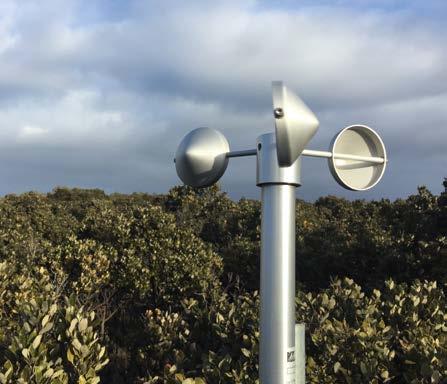
The Climate and Atmospheric Science major gives you a focussed specialisation in the dynamics and mechanisms driving variability and change within the atmosphere and climate system.
There are two streams available within this major: the “Weather and Climate stream” and the “Climate Change Science” stream.
Weather and Climate stream: Do you want to know how a tornado or a tropical cyclone works? Ever wondered why we can make accurate weather forecasts? This stream examines the major physical forces that affect the behaviour of the atmosphere.
Climate Change Science stream: What does the science say about human-induced climate change? How do we know what the climate has been in the past? Get familiar with policy frameworks concerning climate change and how we can respond to this urgent issue.
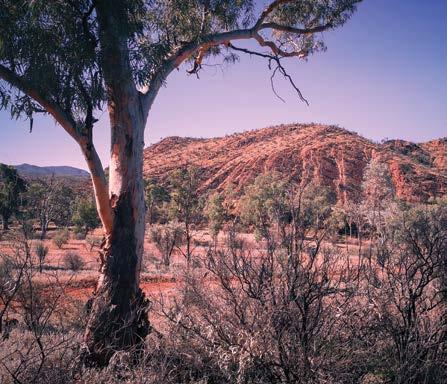
Earth Sciences is a broad discipline that addresses the major processes that have shaped our planet over time and continue to pose natural hazards to society, and provide resources that we need to sustain a modern society.
The Earth Sciences major has three streams:
Geosciences stream: You will learn about geological processes: plate tectonics, basin formation, volcanology, earthquakes, and formation of the critical mineral resources needed for our transition to a renewable energy future.
Earth’s Physical Environment stream: You will learn about the interaction of physical systems with the biosphere (rivers, groundwater, soils, landscapes)
Earth’s Climate stream: You will learn how to understand and predict natural and anthropogenic climate change and its impacts.
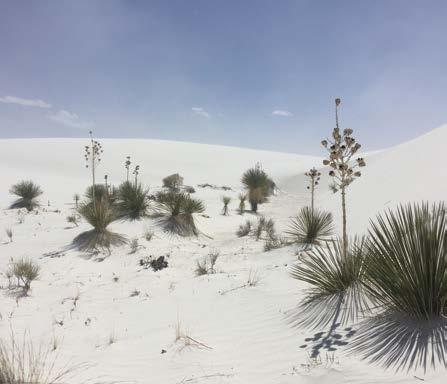
Geographical Science is the interdisciplinary study of understanding how natural and human processes affect our planet including soils, vegetation, water, landforms and climate throughout time. This is the study of how Earth Science interacts with us.
In this major, you will learn to analyse and synthesise complex environmental, economic, social and political information to enable a geographical understanding of humans, environments and the planet, and their management.
You don’t need to choose a stream right away; in first year you will get a taste of everything, and you can make up your mind later!
The School of Earth, Atmosphere and Environment has an extensive and highly successful research program with research strengths in Atmosphere and Climate, Geography and Environment and Geoscience. You can become part of our vibrant research community and undertake an Honours, Masters or PhD, being mentored by some of Australia’s leading scientists.
Your studies in Earth, Atmosphere and Environment aren’t limited to the classroom! From the rugged Victorian coast to the vast Australian deserts, you will have opportunities to immerse yourself in the field.
We offer many different field trips at every level of study. Take a multi-day road trip, or a day trip just around the corner. You won’t just learn about your environment; you’ll learn IN your environment!

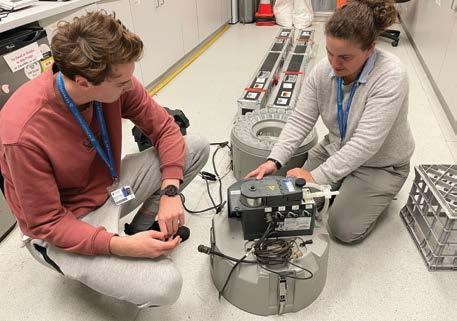
An undergraduate research project in our school will give you hands-on experience of research in an area of your interest. Paired with one of our leading researchers, you will perform some original research and get a snapshot of life as a research scientist. You will experience all the steps in the research process, from researching your topic, to designing your experiment, performing your research and presenting your results.
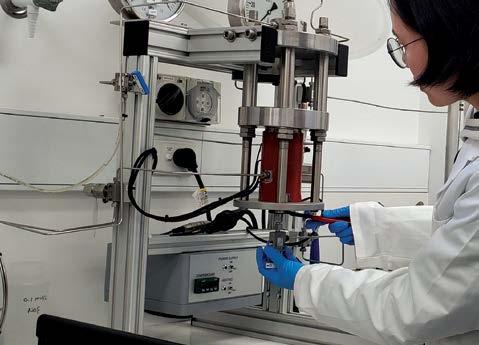
Build on the knowledge and experience gained from your Honours degree or professional experience through our PhD and Master research programs. We have a large, diverse, and vibrant community of staff and students from a wide range of backgrounds, providing a productive scientific environment as well as an active social atmosphere.
Our postgraduate students research topics across the spectrum of the earth, atmospheric and environmental sciences, with emphasis on interdisciplinary research. We also actively collaborate with other universities, industry, and state and federal government agencies in Australia and overseas.

A fourth year of study after your major can give you an Honours degree in your EAE specialisation will set you apart.
The Honours program represents the transition between undergraduate teachings to research-based learning. It is an ideal transition to any career, and a first class honours qualifies you for a professional research career. The EAE Honours program covers all our areas of study. Our Honours graduates are sought after by industry and government agencies and many continue to Doctor of Philosophy ( PhD) studies to build research careers.
PROJECT: INVESTIGATING METHANE FLUX DYNAMICS IN TEMPERATE AND SUBTROPICAL COASTAL WETLANDS ACROSS AUSTRALIA
PHD CANDIDATE: EBONI VIENNA-HALLAM
I study methane fluxes between the land and atmosphere in coastal wetlands under different climatic conditions in Australia. Methane emissions from wetlands can turn these ecosystems typically considered carbon sinks into sources. As such understanding how and why methane fluxes change is critical for climate change mitigation.
I investigate the extent of methane emissions in coastal wetlands and how changes in hydrology effect these emissions through influencing methane production, consumption and transport. My research is achieved through field and laboratory work, including eddy covariance measurements, microbial DNA extraction and sequencing, and porewater and soil sampling.
My research has enabled me to develop a wide range of skills, all of which are invaluable in preparing me for my career after university. Through my work I hope to improve our understanding of methane flux dynamics, particularly in Australia. This knowledge can help us in the development of more accurate climate models, improved mitigations strategies and enhanced management techniques.
PROJECT: SYNOPTIC DYNAMICS OF RAINFALL-PRODUCING SYSTEMS AND THEIR ROLE IN DEVELOPING AUSTRALIAN DROUGHTS
PHD CANDIDATE: CHENHUI JIN
I study a wide range of rainfall-producing weather systems and their interactions in Australia. Those weather systems are fundamentally responsible for rainfall, and their frequency and intensity shape seasonal rainfall variability.
My study focuses on how weather systems play a role in heavy rainfall events that are important during the different stages of drought in southeastern Australia. I look at how weather systems organise during heavy rainfall events, and how drought can be explained by differences in the characteristics of those weather systems. My investigations include programming works.
My research has enabled me to develop a wide range of employability skills and prepare me for my career after graduation. Through this work I aim to gain a better understanding of what combinations of weather systems can result in heavy rainfall events in southeastern Australia. This will allow us to develop our knowledge of heavy/extreme rainfall events that are important for drought.
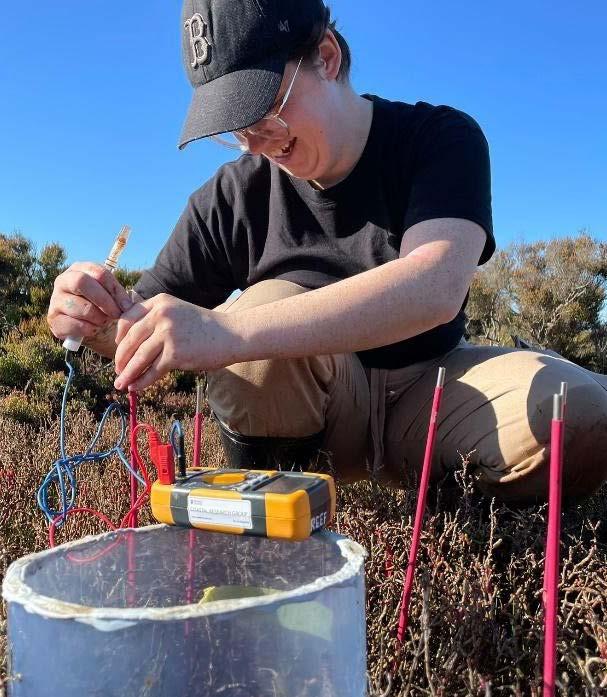

My PhD study can help to understand drought by investigating characteristics of weather systems in heavy rainfall events.”
CHENHUI JIN PhD Candidate
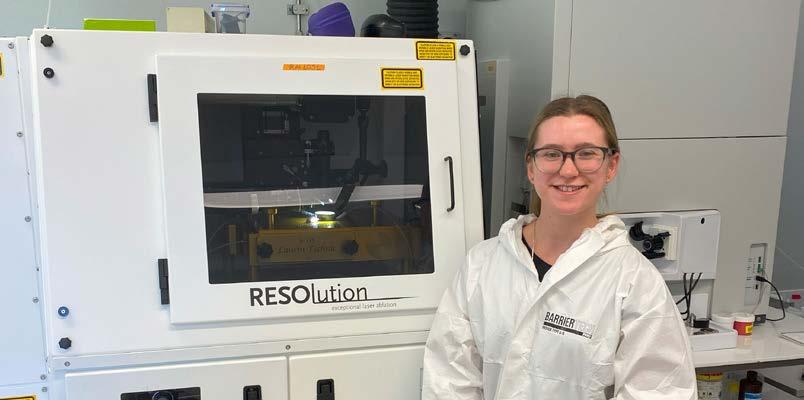
PROJECT: VOLCANIC SYSTEMS AND MAGMA GEOCHEMISTRY OF MARS: INSIGHTS FROM MARTIAN METEORITES
PHD CANDIDATE: TAHNEE BURKE
I study Martian meteorites; these are rocks that were blasted off Mars’ surface and ejected into space up to 10 million years ago, they travelled through space only to be caught in Earth’s gravitational field before crashing down to Earth’s surface. These are very rare samples that are the only physical pieces of Mars that we can study in advanced laboratories.
I examine the geochemistry of different mineral crystals within these rocks to find out how the plumbing system of Martian volcanoes operate. This includes lots of laboratory work both at the university and internationally, using high energy x-rays, lasers and Synchrotron methods. Researching at Monash has allowed me to present my work and achievements to the global Planetary science community and helped me to create international networks.
My experiments have enabled me to develop a new way of classifying Martian meteorites without destroying these rare samples. Through my research we have a better understanding of the geochemical and physical constraints on volcanic magmatism, allowing us to be better prepared for the success of the Mars Sample Return missions and the examination of fresh unaltered samples from Mars.
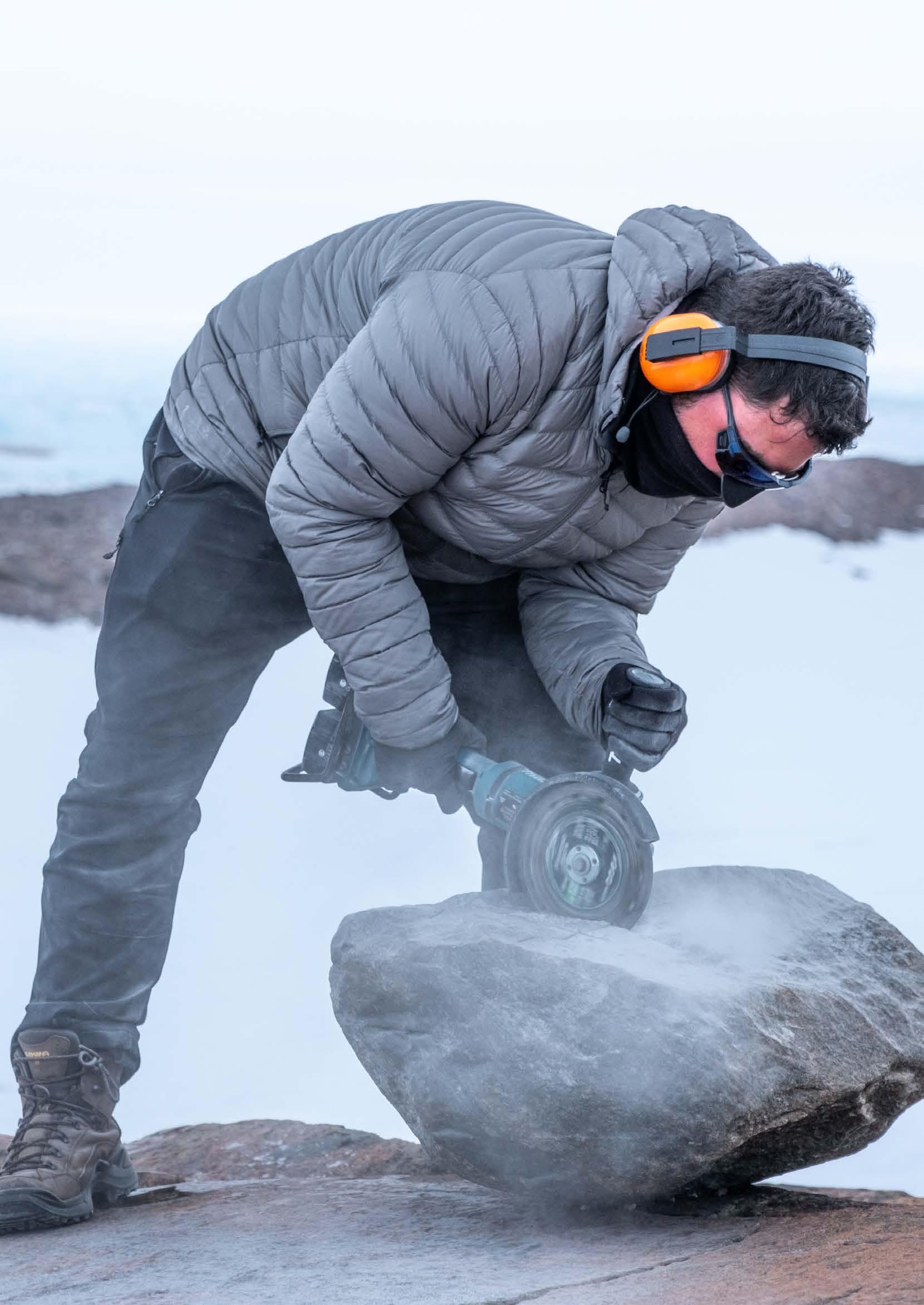
PROJECT: INVESTIGATING THE BEHAVIOUR AND RETREAT OF THE DENMAN-SCOTT GLACIER SYSTEM, EAST ANTARCTICA, OVER THE PRE-INDUSTRIAL HOLOCENE
PHD CANDIDATE: COREY PORT
I study how Antarctic glaciers have responded to pre-industrial climate change over the last 12,000 years, unearthing clues as to how they might behave in the future. The Antarctic Ice Sheet is becoming increasingly vulnerable to anthropogenic climate change, with many of the continent’s glaciers showing signs of rapid and potentially irreversible retreat, releasing large amounts of freshwater into the Southern Ocean. This has global implications, both for our future climate, and for sea levels and coastal communities.
To understand the past lives of these glaciers, I look at the evidence they leave behind as they retreat. For example, as a glacier thins, it deposits material that it once transported, such as boulders and cobbles, and exposes bedrock that has been rounded and polished by the immense weight of the ice that was once above it. I investigate these features out in the field ( in Antarctica! ), and in the lab, to learn not only how large these glaciers were in the past, but when and how quickly they thinned.
My research has provided me with fantastic opportunities, such as going to Antarctica to conduct fieldwork for 10 weeks, and has allowed me to develop a wide range of skills, preparing me for my career beyond the PhD. It has also given me the satisfaction of contributing to our understanding of one the Earth’s most fascinating landscapes. I study how Antarctic glaciers have responded to pre-industrial climate change over the last 12,000 years, unearthing clues as to how they might behave in the future.

Our GIS&T Masters allows you to immerse yourself in the world of spatial data management, spatial analysis, modelling and visualisation, discovering the power of GIS tools for tackling real-world challenges. From terrain analysis to ecosystem service valuation, the course unfolds like an adventure, blending theory with hands-on examples that come to life. Unleash your GIS potential and navigate the landscapes of environmental research with confidence.
DR XUAN ZHU Course Coordinator
Author of GIS for Environmental Applications: A practical approach
COURSE CODE: S6007 1. Available in 2025
The Master of Geographical Information Science and Technology provides industry-relevant training to allow you to pursue or further your career in global and Australian geospatial industry. You will learn the principles, techniques and applications of GIS and technology in a contextual environment from experts at the cutting edge of this field.
The course provides you with the theoretical knowledge and technical skills necessary to develop and apply solutions based on GIS and technology to real-world problems using a range of the state-of-the-art spatial information or geospatial technologies including geographical information systems (GIS ), remote sensing, global navigation satellite systems (GNSS ), spatial analysis and modelling, and decision support systems; design and implement methods for spatial data capture, design, develop and manage spatial databases; explore, integrate and analyse spatial data from multiple data sources; and to design and implement appropriate procedures for quality control, formulate, implement and manage GIS and remote sensing projects.
CLAYTON (ON-CAMPUS)
Full time & part time
FEBRUARY ( First semester )
JULY ( Second semester )
2 YEARS / 1.5 YEARS ( full time) depending on prior qualifications. See entry requirements
Applicants for 2-year version commence in February Applicants for 1.5 year version commence in July
ENTRY LEVEL 1
96 POINTS TO COMPLETE
DURATION 2 years full-time, 4 years part-time
An Australian bachelor degree or equivalent with at least a minor in environmental science, earth science, geographical science, atmospheric science, biological science, civil engineering, social science, geography, urban and regional planning, archaeology or business and commerce and at least 60% (credit ) average overall, or qualification, experience or employment in a related industry approved by the faculty.
ENTRY LEVEL 2
72 POINTS TO COMPLETE
DURATION 1.5 years full-time, 3 years part-time
An Australian bachelor degree (or equivalent) with a major in environmental science, earth science, geographical science, atmospheric science, biological science, civil engineering, social science, geography, urban and regional planning, archaeology or business and commerce including at least one unit covering the fundamentals of GIS and technology, with at least 60% (credit) average overall, or equivalent qualification and experience approved by the faculty.
As part of your study, you will have the opportunity to undertake supervised independent research or to complete an industry-based internship.
COURSE PROGRESSION MAP
YEAR 1
Sem 1
YEAR 1
Sem 2
YEAR 2
EAE4051 Fundamentals of geographical information science
EAE5051 Spatial databases
Remote sensing
EAE5052 Spatial data interoperability and integration
Sem 1 24 points of extended studies in one of the following streams
YEAR 2 Sem 2
Stream 1. Advanced GIS & technology
Stream 2. Data science for GIS & technology
Stream 3. Environmental and sustainability studies
Introduction to databases
EAE5053 Advanced spatial analysis and modelling
EAE5054 Research methods and project management
GIS&T Research project (suitable for those wishing to pursue further research) OR GIS&T Internship (suitable for those wishing to advance their careers in a GIS&T industry)
COURSE CODE: S6000
Deepen your knowledge and skills through advanced coursework and industry application to advance your career or pursue further research. The Monash Master of Science is an expert master’s course that prepares you for professional employment or for PhD studies.
An advanced program for science graduates with an undergraduate degree in a related discipline, depending on your interests, you will be able to choose from the following disciplines that leads to a specialist award:
• ASTROPHYSICS
• ATMOSPHERIC SCIENCE
• EARTH SCIENCE
• PHYSICS
An Atmospheric Science specialisation will develop your knowledge of Atmospheric science through advanced coursework.
Studies will be chosen from a variety of topics including Statistics for climate dynamics, Dynamical meteorology, General circulation, Atmospheric modelling, Climate modelling, Atmospheric boundary layers, and Ocean circulation and dynamics.
The Earth Science specialisation will develop your knowledge of Earth science through advanced coursework; you will also have the option to undertake elective coursework in other subject areas relevant to career development in Earth science. Some of the elective options are offered through the Victorian Institute of Earth and Planetary Sciences ( VIEPS )
Studies will be chosen from a variety of topics including Ore deposits, Mineralogy, Petrology, Geochemistry, Geochronology, Advanced structural geology, Tectonics and geodynamics, Geology from Geophysics, Field geology, Geographic Information Systems (GIS ), Remote sensing, Spatial data analysis, Hydrogeology and Environmental geochemistry, Physical geography, Climate change, Water security, and Environmental pollution.
In addition to coursework studies, you will complete a research project in theoretical, computational or observation-based science and there is an option to include Work Integrated Learning.
CLAYTON (ON-CAMPUS) Full time & part time
FEBRUARY ( First semester )
2 YEARS / 1 YEAR (full time) depending on prior qualifications. See entry requirements
JULY (Second semester) ( Astrophysics and Physics specialisations only)
QUALIFICATION: Master of Science in Astrophysics, Master of Science in Atmospheric science, Master of Science in Earth science, Master of Science in Physics
MINIMUM ENTRY REQUIREMENTS QUALIFICATIONS
ENTRY LEVEL 1
96 POINTS TO COMPLETE
DURATION 2 years full-time, 4 years part-time
An Australian bachelor degree (or equivalent) in a cognate science discipline with at least a 65% average in the intended masters discipline or equivalent qualification and experience approved by the faculty.
ENTRY LEVEL 2
48 POINTS TO COMPLETE
DURATION 1 year full-time, 2 years part-time
A four-year Australian honours degree (or equivalent) in a cognate science discipline with at least a 65% average in the intended masters discipline or equivalent qualification and experience approved by the faculty.
COURSE PROGRESSION MAP
MASTER OF SCIENCE IN ASTROPHYSICS
YEAR 1
Sem 1
YEAR 1
Sem 2
YEAR 2
Sem 1
YEAR 2
ASP4020
Astrophysics coursework A (12 points)
ASP4000
ASP4021
Physics coursework B (12 points)
Astrophysics research project (24 points)
ASP5020
Advanced astrophysics coursework A (12 points)
Sem 2 ASP5000
ASP5021
Advanced astrophysics coursework B (12 points)
Advanced astrophysics research project (24 points)
MASTER OF SCIENCE IN ATMOSPHERIC SCIENCE
YEAR 1
Sem 1
YEAR 1
Sem 2
YEAR 2
Sem 1
YEAR 2
Sem 2
Advanced studies
EAE4000 Atmospheric science research project A (12 points)
EAE4001 Atmospheric science research project B (12 points)
Extended technical studies EAE5000 Advanced atmospheric science research project A (12 points)
EAE5001 Advanced atmospheric science research project B (12 points)
MASTER OF SCIENCE IN EARTH SCIENCE
YEAR 1
Sem 1 Advanced studies
YEAR 1
EAE4010 Earth science research project A (12 points)
Sem 2 EAE4011 Earth science research project B (12 points)
YEAR 2
Sem 1 Extended technical studies
YEAR 2 Sem 2
EAE5010 Advanced earth science research project A (12 points)
EAE5011
earth science research project B (12 points)
MASTER OF SCIENCE IN PHYSICS
YEAR 1
Sem 1
YEAR 1
YEAR 2
coursework A (12 points)
Sem 1 PHS5020
YEAR 2
coursework B (12 points)
physics coursework A (12 points) PHS5021
Sem 2 PHS5000
PART

physics coursework B (12 points)
physics research project (24 points)
FURTHER INFORMATION
MONASH UNIVERSITY monash.edu
FIND A COURSE monash.edu/study
FUTURE STUDENT ENQUIRIES
Australian citizens, permanent residents and New Zealand citizens monash.edu/study/contact-us
International students
T Australia freecall: 1800 MONASH (666 274)
T +61 3 9903 4788 (outside Australia)
MONASH EARTH, ATMOSPHERE AND ENVIRONMENT ONLINE
E study@monash.edu YOUR ESSENTIAL GUIDE TO MONASH SCIENCE
WEBSITE monash.edu/earth-atmosphereenvironment FACEBOOK MonashUniScience
INSTAGRAM instagram.com/monasheae
TIKTOK @monash_science
X @ Monasheae
YOUTUBE youtu.be/jR2aQZF2NDM
